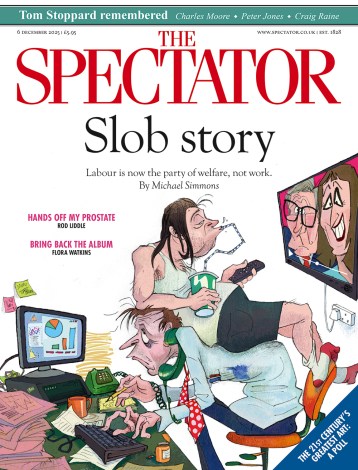There have been enough monsters after them — Denis Nielsen, Peter Sutcliffe, Harold Shipman, Fred West — but the 1960s Moors Murderers still arouse the greatest revulsion. Ian Brady and Myra Hindley didn’t murder as many people as those other serial killers: their victims were only five. But they were all children, sexually abused, tortured and then killed with unspeakable cruelty. The case of the ten-year-old Lesley Ann Downey is the most dreadful. Brady, with Hindley’s collusion, not only undressed her, gagged her, forced her to pose for pornographic photographs, raped her and killed her, probably by strangling her with a piece of string; he also made a 13-minute tape recording of her screaming and pleading for help, a tape to which her mother had to listen to confirm to the police that the voice was hers.
These are events that are still painful to think about almost half a century after they occurred. But every now and then one is forced against one’s will to think about them. The late Lord Longford bears some responsibility for this by conducting a long campaign for the release of Myra Hindley after she was received in prison into the Roman Catholic Church. His efforts were doomed from the start, for the families of her victims and public opinion in general would never have tolerated any reduction in her life sentence. But he was also misguided to think that repentance and religious conversion could in themselves be reasons for setting her free. If they were, prisoners throughout the land would be queuing up to convert.
Hindley’s record in prison had not been good. She had even attempted to escape with the assistance of a female prison officer with whom she had fallen in love. And I think that her religious conversion, if genuine, should have included the humble acceptance of a punishment that she richly deserved. Instead, she argued that she had become a good and decent person who was therefore entitled to be free. She was thwarted in this ambition. She died ten years ago of a chest infection after 36 years in jail. She was 60 years old.
On hearing in 2004 that Dr Harold Shipman, sentenced to life after murdering more than 250 of his patients, had hanged himself in Wakefield Prison, the then Home Secretary, David Blunkett, said he felt like ‘opening a bottle’. I don’t know if he had felt the same about Myra Hindley, but for a Home Secretary to rejoice when a wicked person dies in prison puts him in conflict with official policy, which requires prisons and mental hospitals to do everything they can to keep even their most loathsome inmates alive.
Rather often they fail in this, but the Ashworth Hospital on Merseyside has so far succeeded very well in the case of Ian Brady. Brady, 74, who was back in the news last week after breaking two vertebrae in a fall that made him ‘acutely physically unwell’, has for years been longing to die. He has been on a hunger strike since 1999, but the authorities have ever since been force-feeding him through a tube. If he were a normal prisoner, this would not have been allowed. But having been diagnosed as a psychopath and sectioned under the Mental Health Act in 1985, he was stripped of the right enjoyed by normal citizens to starve themselves to death. A mental health tribunal had been due to review his case on Monday, but the hearing was postponed because of his illness, so the force-feeding will go on.
Brady hasn’t been alone in wanting himself dead. Most Britons think he should have been hanged long ago. But the authorities decided he must live, while at the same time taking pains to deprive him of any reason to want to. Brady, while insisting that he never wished to be released from jail, had expressed ‘deep remorse’ for his crimes and seemed to be stepping gingerly on to the path of righteousness by starting to transcribe books into Braille for the blind. But without explanation, the Home Office called a halt to this work and also rejected an offer by Brady to donate one of his kidneys for medical research. The criminologist Colin Wilson, who corresponded with Brady for almost a decade, believes ‘it was because these attempt to express remorse were thrown back at him that he began to contemplate suicide’.
I don’t think that when we abolished hanging the idea was to replace it with something even more ghoulish. But that is what we have done in the case of Ian Brady. And it’s only because he’s officially mad that we are allowed to force-feed him, something we couldn’t do to the Irish Republican hunger strikers in the 1980s because they were considered to be sane. Should we not now muster the humanity to let the poor monster die?





Comments